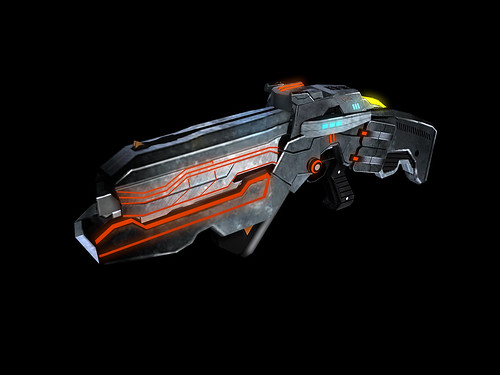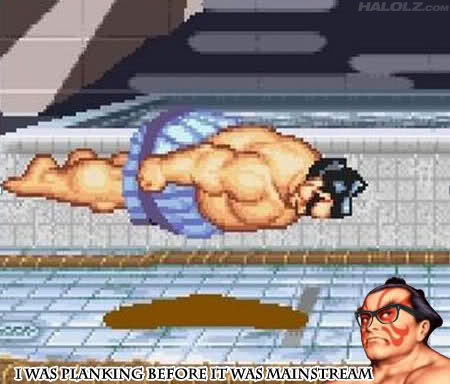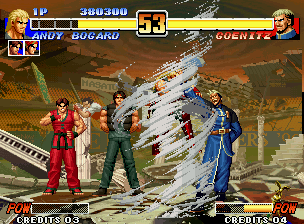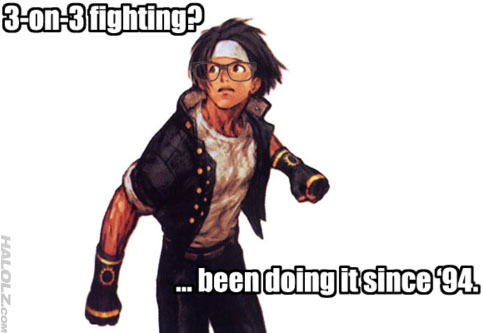The first Conduit on the Wii was ambitious, but ultimately
fell short of a good game due to numerous problems both in its design and its presentation. There are still many fans of the first game
nonetheless, and as a result, Sega took another dip into making a truly great
sci-fi action Wii game. As any good game
sequel should, Conduit 2 continues the story set by the last game, completely
abolishes all of the complaints about the first Conduit, and plays to its strengths,
making a far more substantial sci-fi adventure.
The story takes place literally moments after the first
game, in which Michael Ford and his alien friend (inside an ancient
wonder-machine) go through a conduit after the evil manipulator John Adams, who
is actually of an ancient alien race called the progenitors, which have
manipulated different countries for centuries.
Adams’ goal is revealed to be to take
the power of the other progenitors for himself and take over the world with it
and his army of humans and cloned aliens from the last game. To prevent that from happening, Ford has to
get to them first, and thus the chase is on.
The story is fairly well done. The plot moves at an even pace, with humorous
exposition from dialogue between Ford and his spherical friend Prometheus to
fill the player in on what’s happening.
However, this game does not fill you in on events from the previous
game. If you don’t know what happened in
The Conduit, you’re going to be a bit lost.
 |
| This is the very first thing you see after the brief recap of the first game's last moment. Lost? |
In fact, the entire game’s story isn’t very
self-contained. Plot threads and
characters from the last game are used and resolved here, but Conduit 2 creates
more to be resolved in future games.
Whether or not that’s a bad thing depends on how long you want the overlying
story of the Conduit games to go on for.
I don’t have a problem with that, but I do have a problem with how it
handles the finale. Even though the story
is of standard length for an action game at 6 hours, it feels like it cuts
itself off. After you find a few of the
progenitors, the final boss fight just seems to come out of the blue, as if
they just ran out of time and got straight to it with no buildup. It’s a fun boss battle, but also
abrupt and a little too easy.
 |
| Harder than that thing though. |
What elevates the writing in Conduit 2 is its ones liners. If you like Arnold Schwarzenegger or Bruce
Campbell one-liners and think they’d be ironically entertaining if spoken by a
man who thinks he’s cooler than he is, then you might as well go get Conduit 2
right now because they are seemingly omnipresent. Michael Ford practically says one-liners like
it’s some kind of other language, and all the game’s equippable loadout
upgrades have some kind of snarky comment annotation at the end of each of them;
for example, the annotation for a healing grenade says “Because we couldn’t
teach bullets to love.”
Even the achievements are able to present themselves as
one-liners. At one point Michael has to
take the “soul” of a progenitor before Adams
can, and as soon as I snagged it with the ASE, a little check box window came
up that read, “Your soul is mine”. The plot
itself isn’t great, but it’s pretty fun for what it is, and the self-aware
sense of humor is a nice touch. If
there’s any part of this game’s story I liked more than any other, it’s the
ending (not the finale). I notice other
people who have reviewed this game have criticized the ending for being another
cliffhanger, but I think it’s probably one of the best cliffhangers ever with
one of the most awesome and iconic images ever seen in a game since
mecha-Hitler from Wolfenstein 3D. You’ll
just have to play it to see it.
 |
| In the meantime, it's time to kick ass and chew bubblegum. And I can't get gumthrough this helmet. |
You certainly can’t fault Conduit 2 for its
presentation. The graphics are nothing
short of fantastic; High Voltage Software’s Quantum3 engine is in full
effect. The lighting effects, particle
effects, character models, and environments of Conduit 2 are all a splendor to
look at. The technical aspects combined
with some good art direction makes Conduit 2 the second best looking game with
realistic graphics on the Wii, beaten only by Resident Evil: The Darkside
Chronicles, and even then it’s a little better than Capcom’s rail shooter in
some ways. One might think that visuals
of such high quality would come with a cost, like regular slowdown or glitchy
environments, but throughout the entire campaign, I ran into only a few minor
graphical hiccups. The game is able to
keep the graphics consistent and smooth even when the action heats up, and Conduit
2 is exactly how a game of this genre should look. High Voltage Software should pat themselves
on the back for their accomplishment. I
have no complaints here.
 |
| My body overflows with the almighty power of the Quantum3 engine! |
As for the music, there’s not much to say. It all comes out clearly, and it does what
it’s supposed to, but there’s not anything notable. It’s just… there (not that that’s a bad thing). The sound effects are great though. The sound made when you get a headshot on an
armored enemy is one that distinguishes itself from other shooters, where a
headshot often gives off a “splurtch” when you get a head shot; instead it
makes more of a “k-thunk”. Each individual
weapon in the game’s impressive arsenal has its own firing and reload sound
effect that all sound exactly as they look like they should. The voice actors need be given credit too. All the characters have great actors that
display their emotion and tone just right, particularly with Prometheus. The way he and Ford (voiced by the same guy
who does Duke Nukem, no less) talked to each other reminded me of Seargent
Cortez and Anya in the FPS classic Timesplitters: Future Perfect. Even the enemies have great voices, with lots
of different lines, threats, and death screams of varying levels of cheese to
keep shooting them from becoming monotonous.
Like the graphics, there isn’t really anything for me to complain about audibly.
But the gameplay and controls are the core of and good game,
I expected nothing less than perfection from a Wii FPS after Black Ops. They’re fully customizable with lots of
different options and ways to play, including the classic controller and the
Wiimotion Plus accessory, which I have heard makes the controls even better. High Voltage Software thought of
everything. I remember seeing someone
play Conduit 2 before it came out and saw that each time they reloaded, the
screen went blurry as they did (so as to simulate the character focusing on
reloading). I thought that would
horribly annoy me when I played it, but it turns out there’s an option to turn
it off. I also thought it would be
awkward to have to thrust the Wiimote forward to perform a melee attack, but it
turns out there’s another control style that assigns the melee to the down
directional arrow, so that pretty much got rid of the only complaints I could
have had about the game’s control setup.
Gameplay in the main missions consist of Half Life 2-esque
semi-linear levels in which Ford goes from one point to another, shooting down
anything in his way. That should sound
like it’s a tedious game, but like Half-Life 2, Conduit 2 avoids tedium through
its variety. The range of enemies,
weapons, settings, and the 3 boss fights makes sure that there’s never a dull
moment, and it all flows seamlessly together with very few breaks in the
gameplay for cutscenes. The fun doesn’t
end with the story though. There are
also big exploratory maps in which you can use the ASE to track down objects
for multiplayer while having to defend yourself from occupying forces. I found these action-packed scavenger hunts
to be a really fun diversion from the main story, but I was somewhat saddened
when I got almost everything in a short time.
More on that later.
This brings us to what most people were looking forward to
in Conduit 2: the multiplayer. The
multiplayer in the game is decent, but nowhere close to being as good as the
Wii version of Call of Duty Black Ops.
Black Ops has more modes, loadout customization, loadout slots, and
weapons (including different grenades and equipment). Black Ops also has killstreaks, the major
factor that makes every match an unpredictable one. But even if Conduit 2 wasn’t going to match
Black Ops’ content, they could have at least matched their features. In Conduit 2’s multiplayer, you can only
voice chat with people you share those stupid, cumbersome, arbitrary friend
codes with. Why? Both Call of Duty: Black Ops and Monster
Hunter Tri allowed for voice chat with strangers. What’s stopping Conduit 2? The two big things Conduit 2 has going for it
that Black Ops doesn’t have are its character image customization (of which
there is not as much as I’d like) and weapon variety.
 |
| Human detected. Prepare termination procedure. |
The different weapons you can use in Conduit 2 are all very
unique in their own way and utilize some sort of secondary fire (much like in
Dead Space) for good measure. The secondary
fire button of the conventional weapons is usually just iron sight/scope
aiming, but for the more complex ones, there’s an extra layer of strategy. For example, the hive cannon ordinarily
shoots bees in a rather erratic spread shot fashion wherever you aim it, much
like a machine gun when not looking down the sights. However, its secondary fire shoots out a
pheromone ball that can stick to any surface, including a player. Once the pheromone is in place, shooting the
hive cannon will have the shots home in on it in a stream of bees for more
efficiency and accuracy. To name another
example, there is an interesting weapon called the dark star. It shoots semi-automatic energy shots that
“tag” anyone they hit. If someone dies
while tagged (assuming the wielder doesn’t), the dark star’s wielder can
activate the secondary fire to shoot a big black ball. When the ball collides with something, it
turns into a black hole and slowly moves toward the tagged players’ corpse
while sucking in anyone around it. And
that’s not even getting into the weapon that shoots through walls, the weapon
that fires an energy bola, and a weapon that catches bullets. Conduit 2’s were clearly fun to make, and
that fun carries onto their use.
 |
| It's called the Dark Star. It..... sucks. |
The different game modes in the online play kept me coming
back for a while. There are 4 different
categories: team games, free for all games, hardcore team games, and hardcore free
for all games. They’re all fun and have
their own unique game modes to play, but I personally prefer being on a team,
reviving downed buddies more than I do holding my own. Plus the maps chosen for team games are
usually far bigger than in free for all, allowing for more freedom and tactical
approaches. The online multiplayer kept
me busy for a long time, but eventually it wore off. Now the only game mode I can find anyone
playing on is for big team matches. I
really wish more people could stimulate the online community to make things
better for everyone else, but I supposed this is somewhat inevitable.
Conduit 2 also has an invasion mode, in which players can
team up with a friend or play alone to shoot down waves of enemies in some of
the scavenger hunt maps I mentioned earlier.
However, invasion mode seems tacked on, and it’s pretty much just the
scavenger hunts in the single player bonus missions, but without the cool items
to find, so I don’t see much point in playing it other than to maybe earn some
credits for the in-game store. Black
Ops’ zombie mode is a far better and bigger diversion, and if High Voltage
Software were to put more effort and creativity into it, I’m sure invasion mode
could be fun. But even if it were that
fun, I wouldn’t have anyone to share it with because it doesn’t have online
play. Why? Black Ops’ zombie mode was online. What was stopping this from doing the same? I know I’ve been harping on Call of Duty: Black
Ops a lot, but if an game is doing something better, the creators of this one
don’t seem to be learning from it.
Invasion mode aside, Conduit 2 only has one shortcoming, and
it has nothing to do with the game’s quality.
No, almost everything in it from the graphics to the menu screens are
polished to a reflective shine. Conduit
2 falters in its quantity. The game
leaves me wanting more. There are only 4
of those fun scavenger hunt maps, three of which are just reused for invasion
mode, there are only 4 bosses, and an insubstantial number of multiplayer
maps. If I had my way, I would want
Conduit 2 to have more bosses, a longer story (or at least some buildup to the
final battle), more of the scavenger hunt bonus maps, more multiplayer maps,
more character image customization options, a better invasion mode, free online
communication, and maybe a few more vehicle sections. If Conduit 2 had all of that, the $50 price
tag would’ve been more justified and I would probably give it an 8 or even a 9. As it stands, however, Conduit 2 gets a
hearty 7.5 out of 10. It’s very fun, and
I strongly recommend it to any sci-fi gamer.
Now that the game is down in price, it’s a good time to go get it. I know for sure I'm getting the next one.
 |
| Hear that? |



































